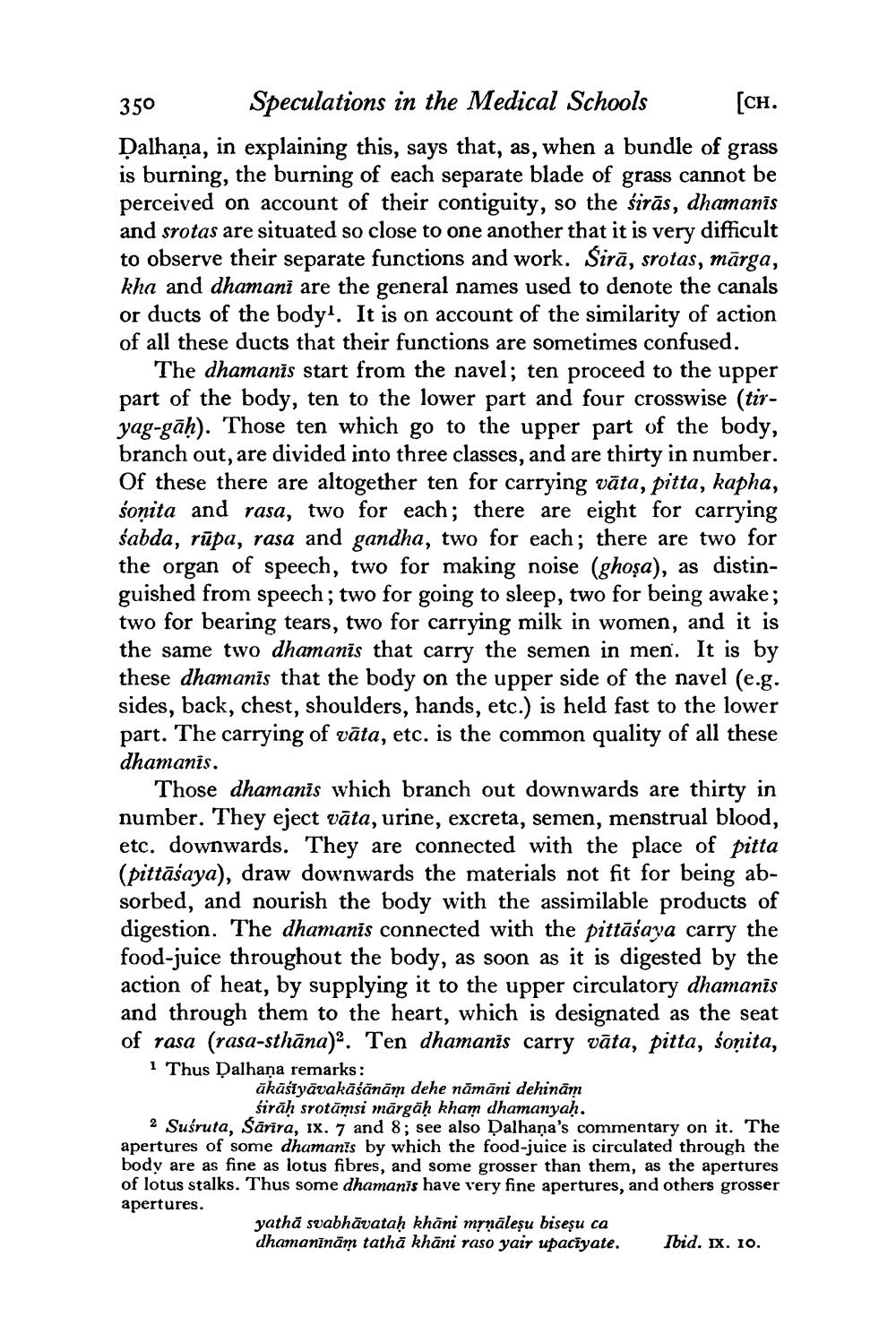________________
350 Speculations in the Medical Schools [CH. Dalhaņa, in explaining this, says that, as, when a bundle of grass is burning, the burning of each separate blade of grass cannot be perceived on account of their contiguity, so the sirās, dhamanis and srotas are situated so close to one another that it is very difficult to observe their separate functions and work. Sirā, srotas, mārga, kha and dhamani are the general names used to denote the canals or ducts of the body. It is on account of the similarity of action of all these ducts that their functions are sometimes confused.
The dhamanīs start from the navel; ten proceed to the upper part of the body, ten to the lower part and four crosswise (tiryag-gāḥ). Those ten which go to the upper part of the body, branch out, are divided into three classes, and are thirty in number. Of these there are altogether ten for carrying vāta, pitta, kapha, soņita and rasa, two for each; there are eight for carrying śabda, rūpa, rasa and gandha, two for each; there are two for the organ of speech, two for making noise (ghoșa), as distinguished from speech; two for going to sleep, two for being awake; two for bearing tears, two for carrying milk in women, and it is the same two dhamanis that carry the semen in men. It is these dhamanīs that the body on the upper side of the navel (e.g. sides, back, chest, shoulders, hands, etc.) is held fast to the lower part. The carrying of vāta, etc. is the common quality of all these dhamanis.
Those dhamanīs which branch out downwards are thirty in number. They eject vāta, urine, excreta, semen, menstrual blood, etc. downwards. They are connected with the place of pitta (pittāśaya), draw downwards the materials not fit for being absorbed, and nourish the body with the assimilable products of digestion. The dhamanīs connected with the pittāšava carry the food-juice throughout the body, as soon as it is digested by the action of heat, by supplying it to the upper circulatory dhamanis and through them to the heart, which is designated as the seat of rasa (rasa-sthāna). Ten dhamanīs carry vāta, pitta, soņita, 1 Thus Dalhaņa remarks:
ākāsłyāvakāśānām dehe nāmāni dehinām
sirāḥ srotāmsi mārgāḥ kham dhamanyaḥ. 2 Susruta, Sārira, Ix. 7 and 8; see also Dalhana's commentary on it. The apertures of some dhamanis by which the food-juice is circulated through the body are as fine as lotus fibres, and some grosser than them, as the apertures of lotus stalks. Thus some dhamanīs have very fine apertures, and others grosser apertures.
yathă svabhāvataḥ khāni mrnāleşu biseșu ca dhamanīnām tathā khāni raso yair upacīyate. Ibid. x. 10.




